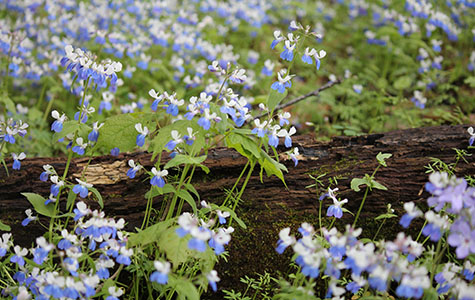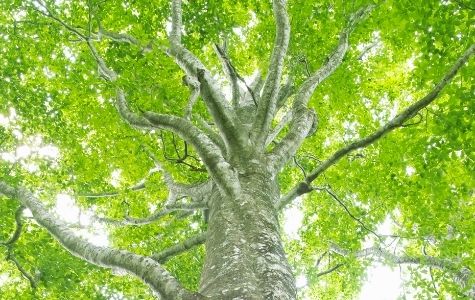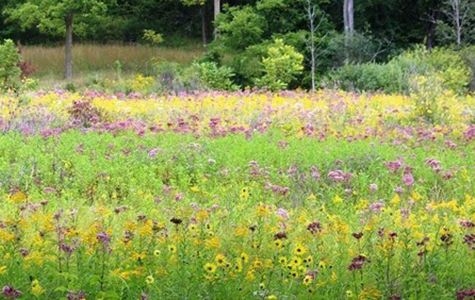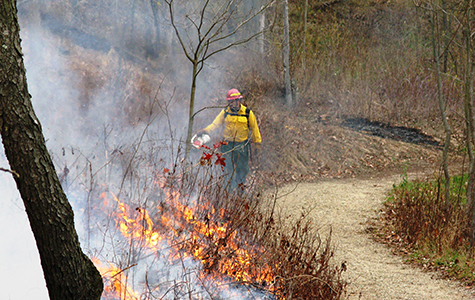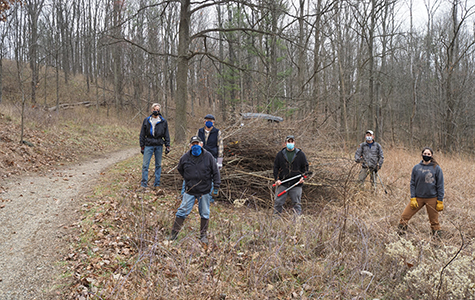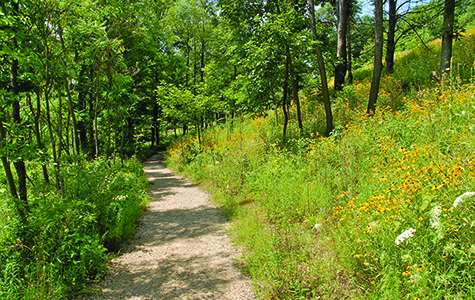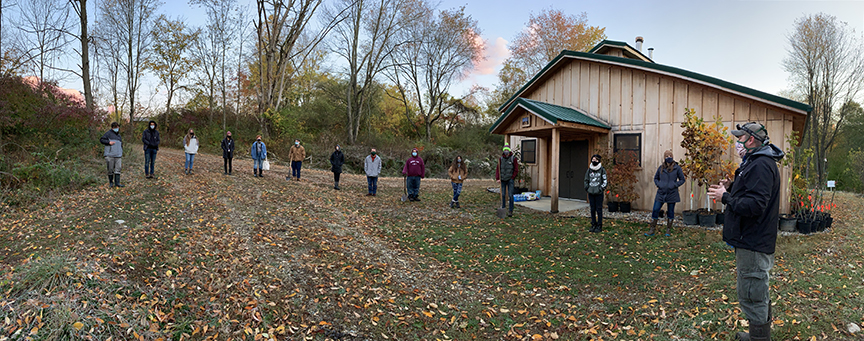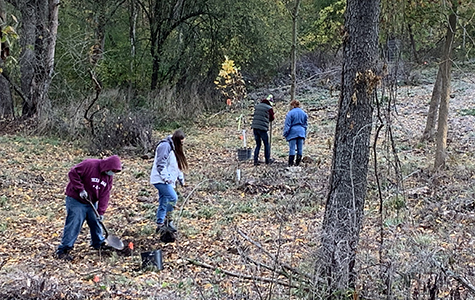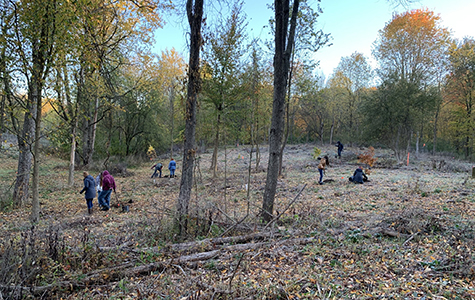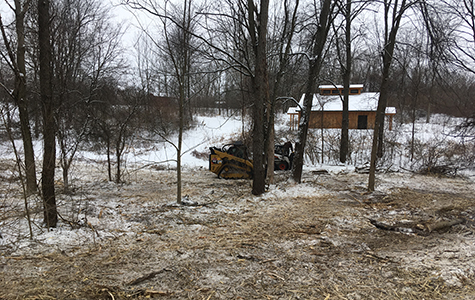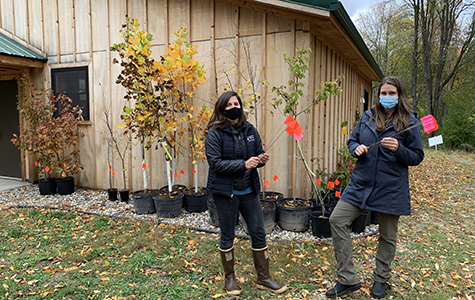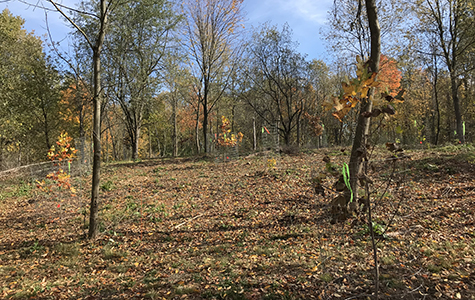The historic beech-maple forests of Cooper’s Glen were the keystone of the original Kalamazoo Nature Center property when the organization was first founded. Today, KNC owns nearly 1,500 acres representing many of SW Michigan’s diverse habitats including native prairies, coastal dunes, and hardwood forests. While some forests on KNC’s grounds have been relatively undisturbed for the last hundred years, other parts of the property have been challenged by invasive species and other ecological threats.
Through support from grants and private donors, our team works to protect, conserve, and restore our ecological heritage through a variety of sustainable land management practices. Whether removing invasive plants from fen wetlands to protect endangered rattlesnake habitat, planting climate-resilient species for forest restoration, or using prescribed fire to manage prairie ecosystems, KNC’s experienced team works to enhance the ecological health of lands that have been entrusted to our care.
Want to make improvements to your own landscape? Check out our contracted services for corporate, municipal, and private landowners: Ecological Services.

